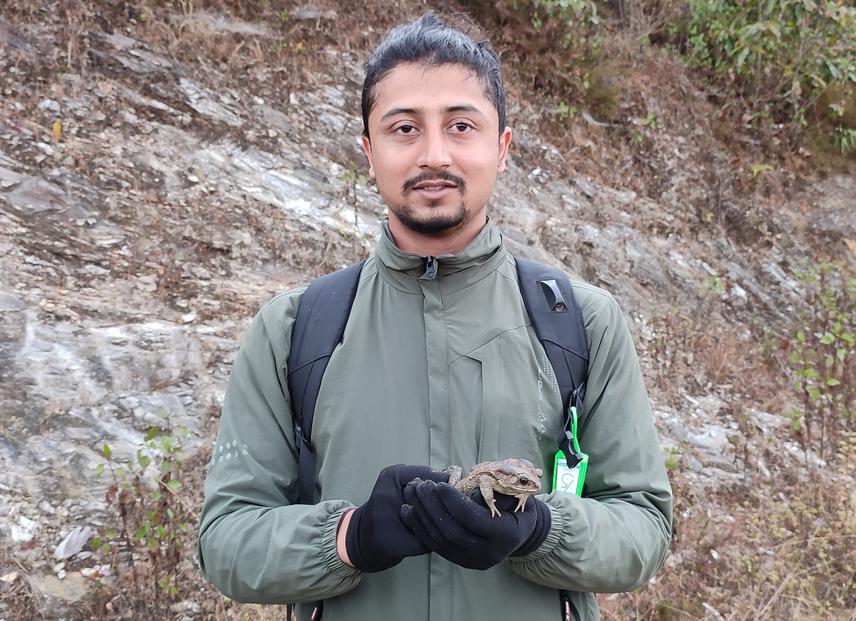Suman Sapkota
Frog hunting and consumption for delicacy, recreation, and false beliefs are common practices from lowlands to highlands in Nepal. Studies have confirmed the use of Paa frogs (Nanorana spp), Toad (Duttaphrynus spp), and Bull frogs (Hoplobatrachus spp) as food in different communities. A study from eastern Nepal suggests that on average a person harvests 50-100 frogs per person which is posing a serious threat to their survival. Studies conducted in Manaslu Conservation Area and Bhojpur district have also provided enough evidence about the over harvesting of frogs. Apart from these reported incidences, the information regarding the intensity, dynamics and severity of hunting is poorly understood in the country. Although the international trade of frogs is reported/documented, the local trade and consumption remains under the shadow. It is estimated that local trade of frogs is far more than international trade which highlights how severe hunting could be in local level.

© Raju Acharya.
The main aims of the project are: 1. to assess the severity of hunting and trade of stream frogs and 2. to sensitize stakeholders and initiate conservation interventions. The project will assess the severity of hunting and local trade of stream frogs and initiate conservation interventions in mid hill region of Nepal. The trend of hunting and consumption of frogs in different parts of the country is posing serious threats which is often neglected while devising conservation plans. The project will unravel the severity of hunting and its impact on amphibians. Various factors affecting hunting like season, preferred species, techniques, intensity, and magnitude will be assessed in detail. Furthermore, local market assessment will be carried out to know the price as well as demand, which will provide insights about extent of hunting and trade and help to predict the severity. These activities will provide detailed understanding of the hunting status and conservation needs of stream frogs. The project will initiate a sensitization campaign for local stakeholders to generate awareness on amphibians and their habitat. By the means of different conservation materials/activities, the project will directly work to minimize the hunting pressure to frogs and conservation of threatened amphibians in Nepal.